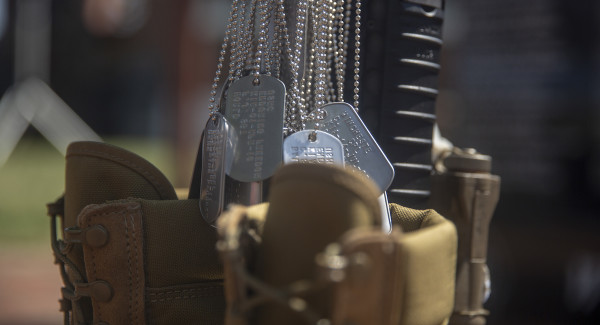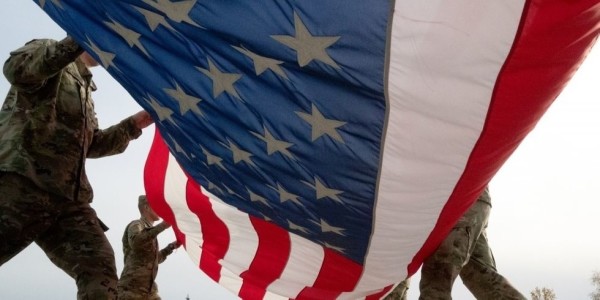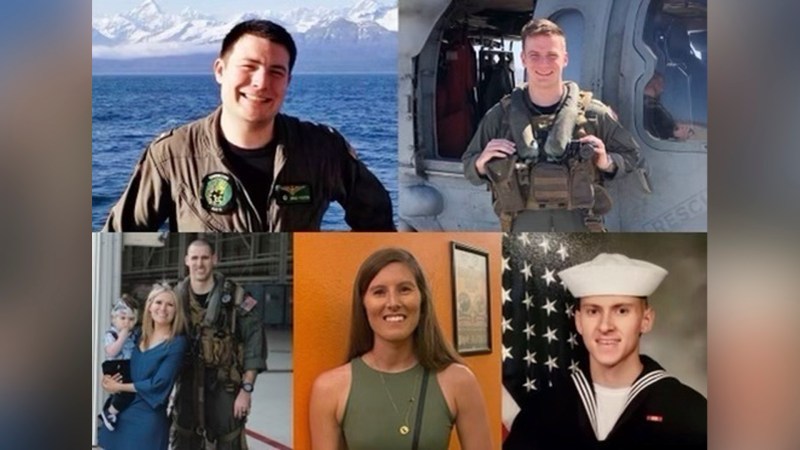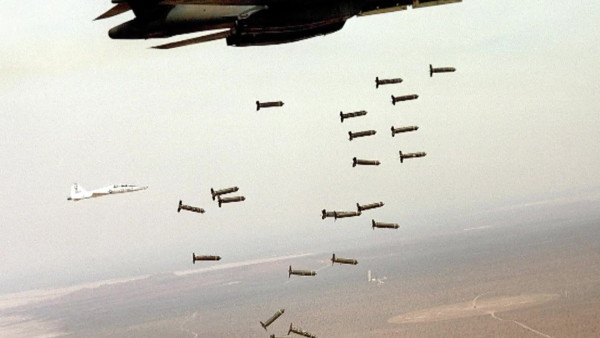CAMP PENDLETON — Susan and Michael McDowell attended a memorial in June for their son, 1st Lt. Conor McDowell. Kathleen Isabel Bourque, the love of Conor’s life, joined them. None of them had anticipated what they would be going through.
Conor, the McDowells’ only child, was killed during a vehicle rollover accident in the Las Pulgas area of Camp Pendleton during routine Marine training on May 9. He was 24.
Just weeks before that emotional ceremony, Alexandrina Braica, her husband and five children attended a similar memorial at the same military base, this to honor Staff Sgt. Joshua Braica, a member of the 1st Marine Raider Battalion who also was killed in a rollover accident, April 13, at age 29.
Braica, of Sacramento, was married and had a 4 1/2-month-old son.
“To see the love they had for Josh and to see the respect and appreciation was very emotional,” Alexandrina Braica said of the battalion. “They spoke very highly of him and what a great leader he was. One of his commanders said, ‘He was already the man he was because of the way he was raised.’ As parents, we were given some credit.”
While the tributes helped the McDowells and Braicas process their grief, the families remain unclear about what caused the training fatalities. They expected their sons eventually would deploy and put their lives at risk, but they didn’t expect either would die while training on base.
“We’re all still in denial, ‘Did this really happen? Is he really gone?’ Braica said. “When I got the phone call, Josh was not on my mind. That’s why we were at peace. He was always in training and I never felt that it would happen at Camp Pendleton.”
What they know
Braica and two fellow Marines were riding in a Polaris MRZR, made to go at high speeds on rugged terrain. The only information released to the family by the Marine Corps is that Braica, the driver, came upon an obstacle along the roadway and swerved to avoid hitting it. In doing so, the vehicle rolled.
1st Lt. Conor McDowell with an LAV in the background at Camp Pendleton. (Photo courtesy of Kathleen Isabel Bourque)
In McDowell’s case, he was in a light armored vehicle (LAV) at the head of a convoy of four as they drove along undulating terrain not far from the coast. Marines who were in the vehicle told McDowell’s father that a heavy marine layer and high grasses made it difficult to see.
Suddenly, they said, McDowell’s vehicle went head-over-heels and landed on its side, crushing McDowell who had been manning the vehicle’s turret. Six other Marines in the vehicle suffered minor injuries.
Recently, Bourque came across some of McDowell’s field manuals, in which he penned daily accounts of his training, detailing concerns:
“Blue Platoon 1 had a rollover,” he wrote Dec. 2, 2018. “No injuries, LAV dropped 8 feet onto the turret and then onto its side. Marines will be assessed and cared for. LAV will remain in place. until daylight. … Seven Marines were on board. My job just got a lot more serious. … This isn’t the end of the world but we got really lucky. LAV just rolled over at Ft. Irwin in blackout conditions. This is the second Charlie Company rollover in two months. . . . It’s a miracle no one was killed. … This is a reminder that at any moment, through careless actions even in training, Marines can die.”
A push for action
While both incidents remain under investigation, the families are not just waiting around for details. They have banded together with families of other rollover victims to push lawmakers into action — to determine what’s causing the rise in training accidents and how they can be curtailed.
“We are fighting to stop more needless, preventable military deaths of our young men and women, and we are just beginning to fight and will keep at it with doggedness and energy,” Michael McDowell said. “We will not rest til we have reduced drastically these heartbreaking deaths.”
There have been eight rollovers reported in the last five years at Camp Pendleton. A sailor was seriously injured in 2016 when a vehicle flipped; three Marines were injured in September 2017 when a tank rolled; and in the two most recent cases, there were two fatalities and five non-life-threatening injuries. In the other instances there were no injuries or fatalities, according to the Naval Safety Center.
But the trend is by no means isolated to Camp Pendleton.
On May 28, Lance Cpl. Hans Sandoval-Pereyra, 21, of Fairfax, Va., was killed when the Humvee he was riding in went off the road in the Northern Territory of Australia. A second Marine was treated for minor injuries in the crash.
Lance Cpl. Hans Sandoval-Pereyra, 21, of Fairfax, Va., died Tuesday, May 28, 2019, from injuries sustained in an accident while training in Australia.(Courtesy of U.S. MARINE CORPS)
The Army, too, has seen its share of incidents, reporting 14 fatalities involving vehicles — eight from rollovers — in fiscal year 2018-2019, which began Oct. 1. Between 2015 and 2018, there were a total of 14 rollover fatalities, said Jason Waggoner, an Army spokesman.
In January, Army Spc. Octavious Lakes, Jr., 22, died when a Bradley Infantry Fighting Vehicle rolled over at the Army National Training Center at Fort Irwin in the Mojave Desert. Also at Fort Irwin, on June 3, Army Staff Sgt. David Gallagher, 51, was killed and three other soldiers were injured when an M1 Abrams tank rolled.
Army Staff Sgt. Jacob Hess, of the 97th Civil Affairs Battalion (Special Forces), died May 15, at age 34, in a Humvee rollover at Fort Polk, La.; 12 other soldiers were injured.
West Point Cadet Chris Morgan died June 6 when a cargo truck rolled over on its way to field exercises.
And most recently, on June 14, Spc. Marquise Gabriel Elliott, a U.S. Army paratrooper stationed in Alaska, died in a vehicle rollover accident.
Last month, in response to the incidents, the Army launched a safety video in which U.S. Army Forces Command Sgt. Maj. Michael Grinston warned soldiers against driving vehicles they’re not trained for. In the video, Grinston said Army motor vehicle mishaps are the No. 1 killers of Army soldiers.
The incidents over the past few months continue a trend of military training deaths and injuries that began in 2015.
In 2017, there were four times as many deaths among service members in training (80) than in combat (21) throughout the armed forces.
In 2018, there were nine training deaths in the Marine Corps and so far this year 10 Marines have died while training, according to Marine Headquarters at the Pentagon. In 2018, the Air Force reported 20 non-combat training deaths.
A report released in May by Congressional Research Services shows that of the 16,652 active-duty deaths in the armed forces from 2006 to 2018, 31.9% were training accidents, compared to 16.3% in combat. The remaining active-duty deaths were related to homicide, suicide, illness and other causes. Suicides accounted for 23.3% of active-duty deaths.
Training injuries and fatalities have become common enough, and systemic enough, that officials are paying attention.
On June 11, U.S. Senators Benjamin Cardin, D-Md., and Chris Van Hollen, D-Md., co-wrote a letter to Secretary of the Navy Richard Spencer voicing their concerns about the number of recent training accidents in the armed forces. Lt. McDowell was one of their constituents.
“We would like you to personally look into these recent incidents and evaluate whether or not there should be additional measures taken during these training missions,” they wrote.
On June 26, Cardin introduced an amendment to the 2020 National Defense Authorization Act, an approval of defense spending by the Senate, which would require the Secretary of Defense to report to Congress the number of fatalities that occur during training. The amendment pushes for an analysis of recent training deaths and whether there are trends emerging, specifically regarding vehicle rollovers. It also asks for recommendations on preventing training deaths and injuries.
“To ensure that our soldiers, sailors, airmen, and Marines are the best fighting force in the world, our military necessarily exercises them in demanding and realistic training,” Cardin wrote. “Effective military training builds readiness, tactical proficiency and competence, and increases the confidence of our military force to win wars. I am concerned, however, that, under the guise of ‘realistic training,’ the military is assuming unnecessary risk that has resulted in an alarming increase in service members’ training-related deaths.
“Something needs to change in the military’s current culture of training safety, and the most recent losses of life reflect that the current culture is increasing risk, not reducing it,” Cardin added.
Other lawmakers also have pushed for change. In 2018, Sen. John McCain, R-Ariz., and Rep. Mike Turner, R-Ohio, who served as subcommittee chairman on the House Armed Services Committee, asked for similar answers. Rep. Darrell Issa, R-Vista, in March 2018 pushed for funding for new equipment, especially in aviation, before retiring from Congress.
What’s causing the increase in accidents?
Military experts have offered several reasons for the mishaps, including a stepped-up deployment schedule, older equipment and delayed maintenance because spare parts are scarce. Retired Marine Col. Walt Yates, who was the Program Manager for Training Systems at Marine Corps Systems Command, said he wonders what role drivers’ decision-making and training play in the recent accidents.
Regarding the death of McDowell, who will be buried with full honors at Arlington National Cemetery on Wednesday, July 17, he said: “If the investigation assigns responsibility for the mishap to the driver of that vehicle then the investigation should also thoroughly examine whether the training provided to this Marine and other LAV drivers is sufficient and realistic enough to develop the skills they need to safely operate the vehicle.”
In an article in the June issue of the Marine Corps Gazette, a professional journal of the Marine Corps, Yates examined what programs the Marine Corps has or has not implemented to help with driver training: “Reliance solely upon on-the-job training in the vehicle to maintain and improve skill would never be accepted as satisfactory for Marine aviators who must train in high-fidelity simulators to be certified to fly the actual aircraft,” he said.
“If training was insufficient to develop the necessary skills to safely operate the LAV then the Marine Corps should acknowledge this in the investigation in order to correct the deficiency and to prevent scapegoating a Marine who had not received adequate training.”
Yates recommends that every Marine driving any vehicle go through a scenario of weather conditions and terrain in a simulator before driving during training.
“In aviation, it doesn’t matter how senior you are,” he said. “If your simulator training is out of date, you can’t fly. In ground vehicles, which are less expensive and don’t fall out of the sky, they let it happen.”
A page from 1st Lt Conor McDowell’s field manual in which he references a December 2018 rollover and the danger Marines can be in during training. (Courtesy of Kathleen Isabel Bourque)
———
©2019 The Orange County Register (Santa Ana, Calif.). Distributed by Tribune Content Agency, LLC.























